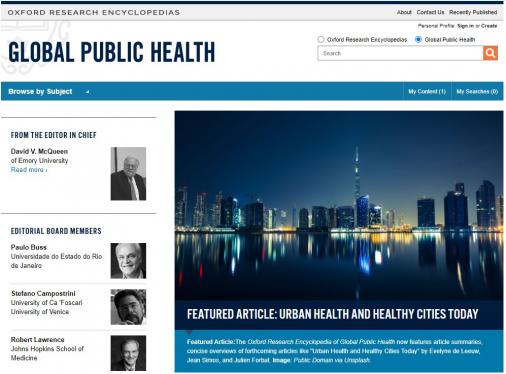October
AN OXFORD RESEARCH STUDY "URBAN HEALTH AND HEALTHY CITIES TODAY" TALKS ABOUT CITTASLOW

The authors of this article purport that for current understanding of Healthy Cities it is useful to appreciate other global networks of local governments and communities. In a context where the local level is increasingly acknowledged as decisive in designing and implementing policies capable of tackling global threats such as climate change and their health-related aspects, understanding how thousands of cities across the world have decided to respond to those challenges appears essential. Starting with the concept of “healthy cities” in the 1980s, the trend toward promoting better living conditions in urban settings has rapidly grown to encompass today countless “theme cities” networks. Each network tends to focus on more or less specific issues related to well-being and quality of life. These various networks are thus not limited to more or less competing labels (Healthy Cities, Smart Cities, or Inclusive Cities, for instance), but entail significant differences in their approaches to the promotion of health in the urban context. The aim of this article is to systematically typify these “theme cities.” A typology of “theme cities” networks has several objectives. First, it describes the health aspects that are considered by the networks. Are they adopting a systemic perspective on all health determinants, such as Healthy Cities, or are they focusing on “hardware” determinants like Smart Cities? Second, it highlights the key characteristics of the networks. For instance, are they pushing for technological solutions to health problems, like Smart Cities, or are they aiming at strengthening communities in order to mitigate their detrimental effects, like Creative Cities? Third, the typology has the potential to be used as an analytical tool, for example, in the comparison of the results obtained by different types of networks in urban health issues. Finally, the typology offers a tool to enhance both transparency and participation in the policymaking process taking place when selecting and engaging in a network. Indeed, by clarifying the terms of the debate, decisions can be made more explicit and achieve a greater level of congruence with the overall objectives of the city. Indeed, Healthy Cities today need to make alliances with other theme networks, and this typology gives the keys to find which networks are the “natural best allies,” avoiding mutually harmful antagonisms. In that sense, the typology developed should be of interest to any actor involved in health promotion at the city level, whether in an existing “theme cities” policy process or as willing to participate in such a program, and to scholars interested in better understanding the main drivers of “theme cities” networks, a rapidly growing field of study.
Urban Health and Healthy Cities Today Evelyne de Leeuw, Jean Simos, and Julien Forbat
Subject: Global Health Online Publication Date: Sep 2020 DOI: 10.1093/acrefore/9780190632366.013.253
SOURCHE: https://oxfordre.com/DOWNLOAD THE DOCUMENT